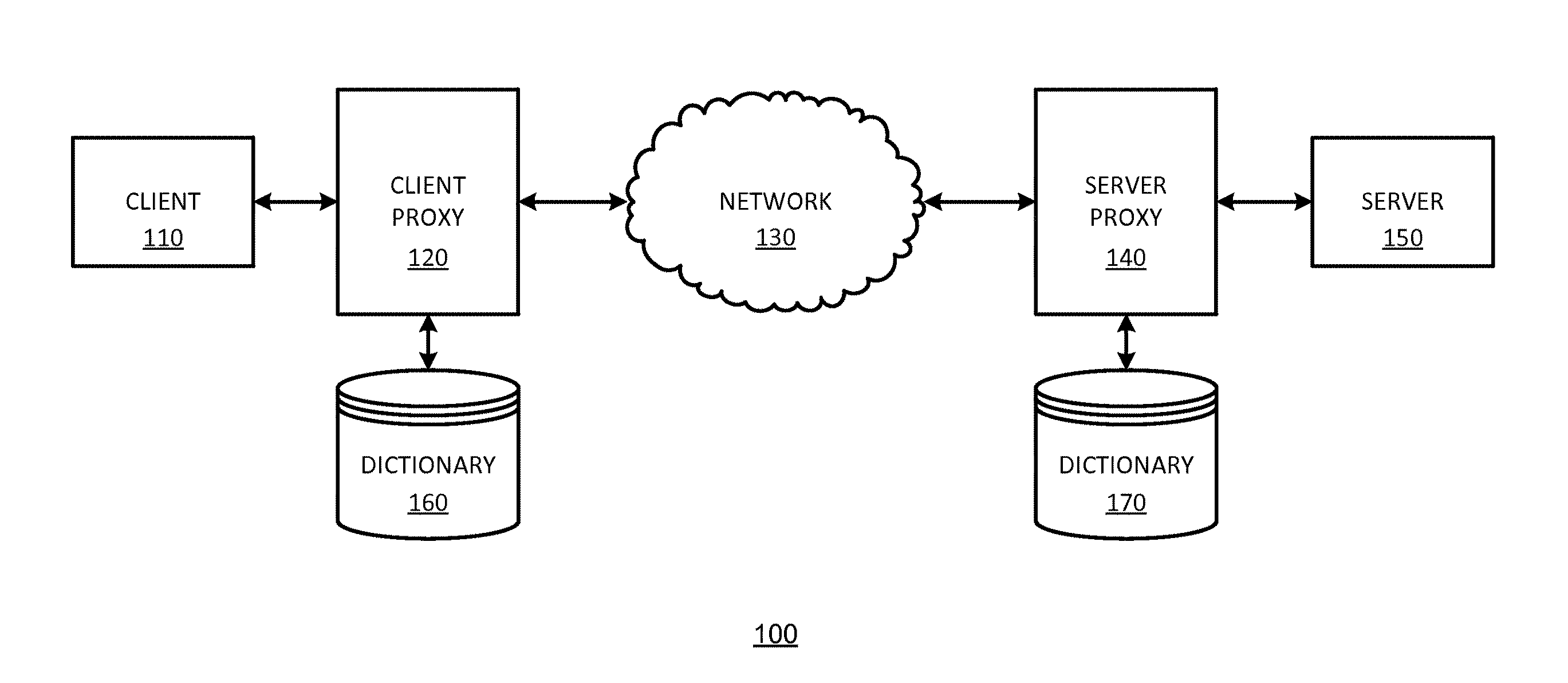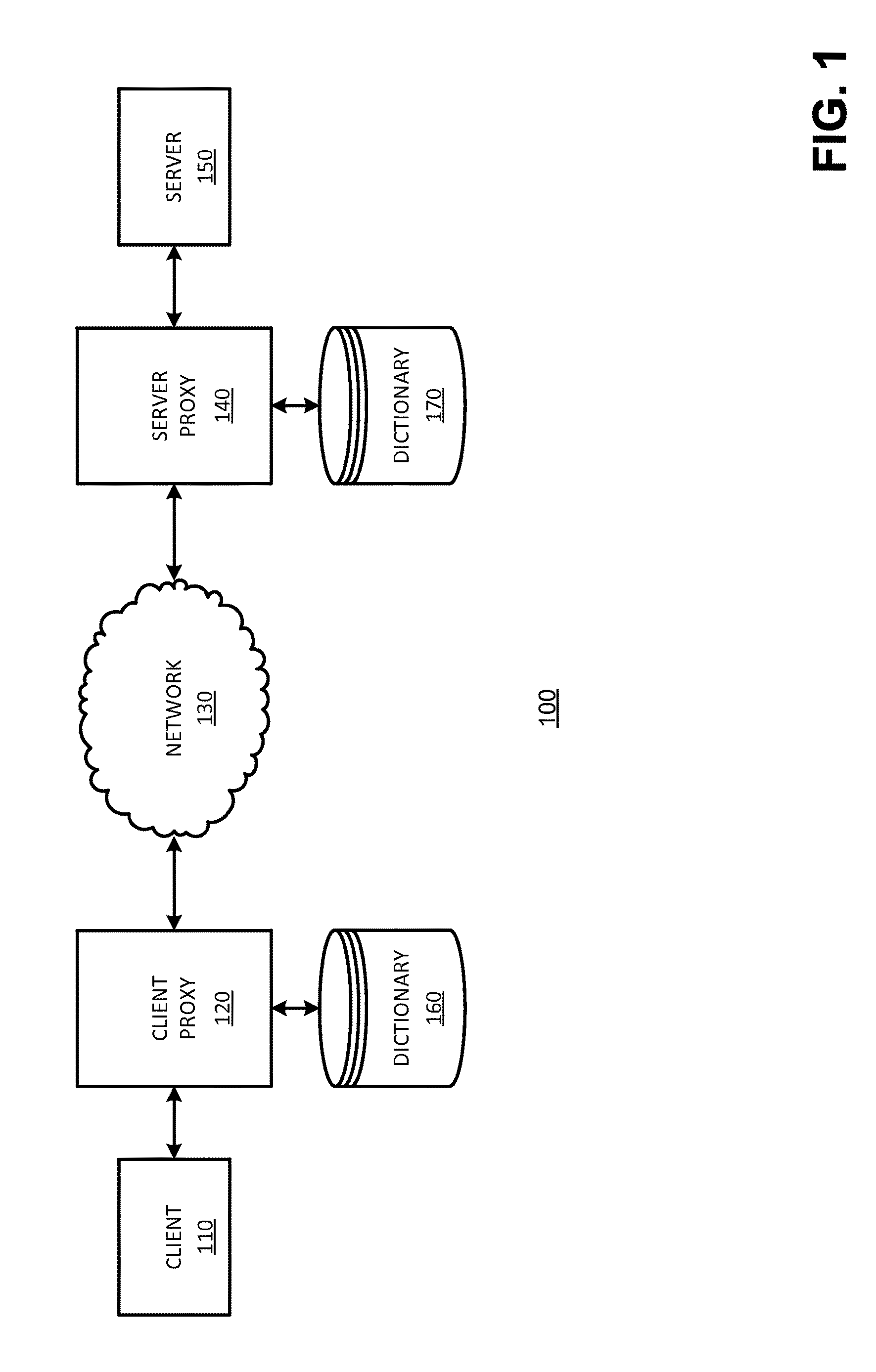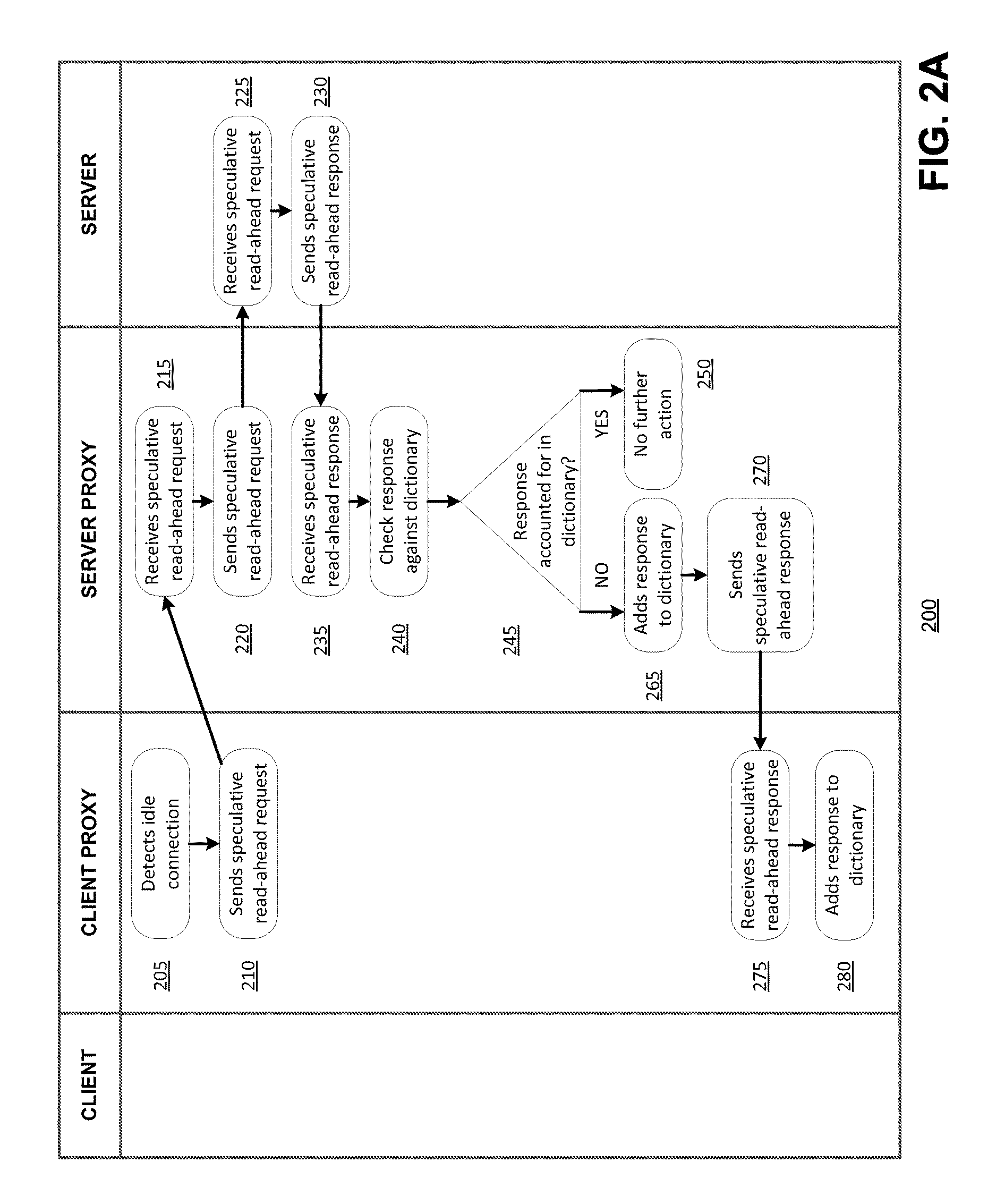Read-ahead on signed connections with unsigning, inline, transparent proxies
- Summary
- Abstract
- Description
- Claims
- Application Information
AI Technical Summary
Benefits of technology
Problems solved by technology
Method used
Image
Examples
Embodiment Construction
[0017]Innovative technologies for reducing network request response times over a server-signed network connection are provided. Although the present disclosure illustrates the novel technologies by way of various systems, methods, and computer-readable media (e.g., non-transitory storage media or other forms of storage media, such as a random-access memory disk), it should be understood that the embodiments described herein are exemplary only and are in no way limiting. For instance, although certain portions of the present disclosure discuss SMB protocols, the described technologies apply equally to other server-signing protocols. Namely, the technologies may be used with any protocol in which plain text is available and packets are signed by the server (or further signed by the client when client keys are available via delegation or the like). The technologies may be used with any protocol tunneled under a generic security service application program interface (GSSAPI) with integr...
PUM
 Login to View More
Login to View More Abstract
Description
Claims
Application Information
 Login to View More
Login to View More - R&D
- Intellectual Property
- Life Sciences
- Materials
- Tech Scout
- Unparalleled Data Quality
- Higher Quality Content
- 60% Fewer Hallucinations
Browse by: Latest US Patents, China's latest patents, Technical Efficacy Thesaurus, Application Domain, Technology Topic, Popular Technical Reports.
© 2025 PatSnap. All rights reserved.Legal|Privacy policy|Modern Slavery Act Transparency Statement|Sitemap|About US| Contact US: help@patsnap.com



